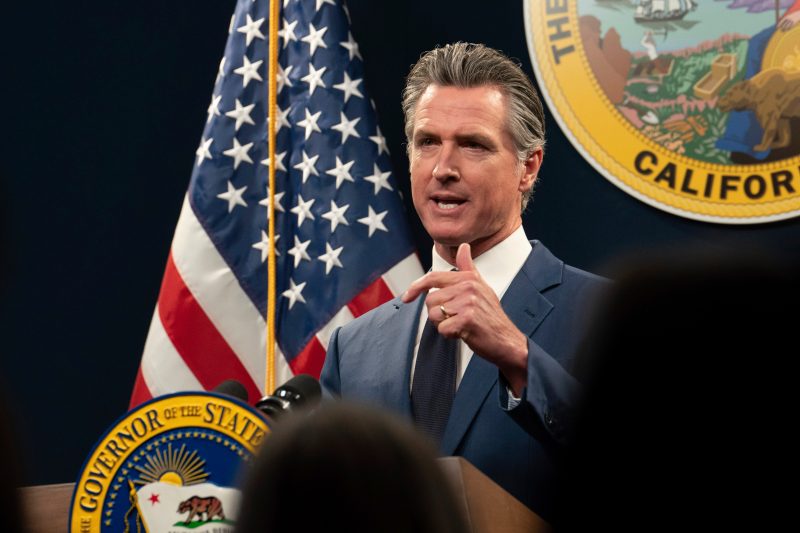California’s Unorthodox Fiscal Rollercoaster: From Surplus to Emergency
The state of California’s financial rollercoaster has been nothing short of spectacular over the past few months. What began as a promising $100 billion surplus quickly morphed into a precarious budget emergency, leaving policymakers scrambling to make sense of the stunning reversal of fortune.
At the forefront of this financial whirlwind is Governor Gavin Newsom, who initially basked in the glory of a historic budget surplus in mid-2021. The surplus was fueled by an unprecedented stock market surge and federal stimulus funds, setting the stage for ambitious spending plans and bold investments in key areas such as education, healthcare, and homelessness.
However, the tide quickly turned as the Delta variant of COVID-19 wreaked havoc across the state, prompting a surge in hospitalizations and a renewed wave of economic uncertainty. The once-flush surplus was suddenly at risk, with projections showing a looming deficit of over $31 billion by 2024.
One of the key factors contributing to California’s budget emergency is the state’s heavy reliance on volatile revenue sources, such as capital gains taxes. These taxes, which are levied on the profits from the sale of assets like stocks and real estate, are subject to wild fluctuations tied to the performance of financial markets.
As the stock market seesawed in response to global events and economic indicators, California’s revenue projections swung wildly, leaving policymakers struggling to predict and plan for the state’s fiscal future. This inherent volatility in revenue sources has exacerbated the state’s budget crisis, creating a precarious financial foundation that may not withstand future economic shocks.
Another contributing factor to California’s budget woes is the state’s complex tax code, which is riddled with loopholes, exemptions, and special interests that undermine the stability and sustainability of government revenue. The state’s overreliance on income taxes, particularly from high-income earners, has left it vulnerable to economic downturns and market downturns, as demonstrated by the recent rollercoaster ride from surplus to emergency.
To add to the complexity, California’s budget process is further muddied by a web of conflicting interests, political pressures, and institutional constraints that make it difficult to enact meaningful reform and prudent fiscal management. The state’s unique system of direct democracy, through ballot initiatives and referenda, often results in conflicting mandates and fiscal handcuffs that hamstring policymakers in times of crisis.
As Governor Newsom and state lawmakers grapple with the daunting task of navigating California’s budget emergency, they must embrace a multi-faceted approach that addresses the root causes of the state’s fiscal fragility. This includes diversifying revenue sources, simplifying the tax code, bolstering rainy day funds, and promoting long-term budget sustainability through prudent spending and investment strategies.
Ultimately, California’s financial rollercoaster serves as a cautionary tale for states across the nation, highlighting the perils of fiscal mismanagement, overreliance on volatile revenue sources, and political gridlock in times of crisis. As the Golden State charts a course through the stormy waters of its budget emergency, policymakers must heed the lessons of the past and embrace bold, innovative solutions to ensure a stable and prosperous future for all Californians.
